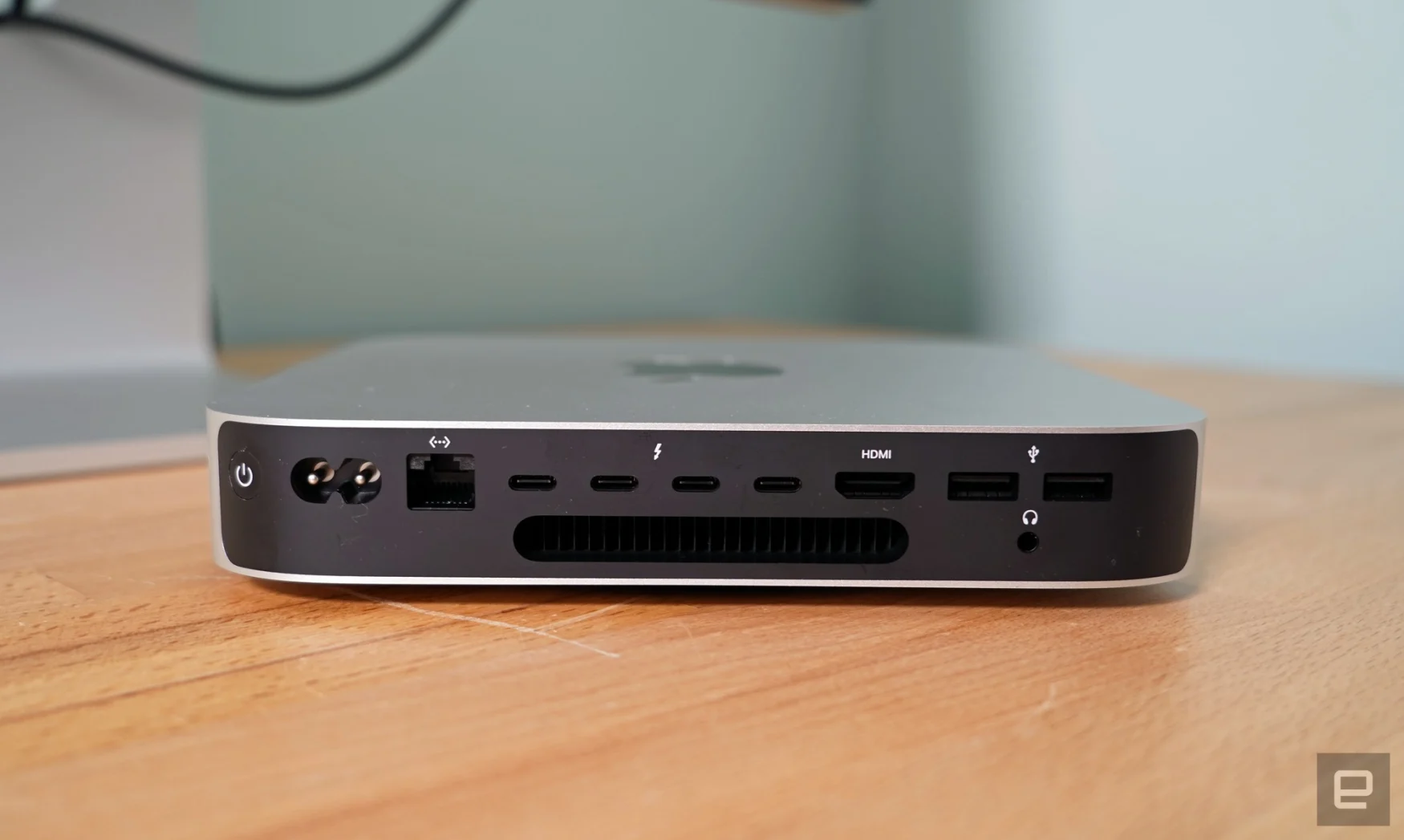Mac mini review (M2 Pro, 2023): Just call it a Mac mini Pro
Since the Mac mini’s debut in 2005, it’s been Apple’s affordable small form factor trooper. Need something cheap to pair with an old monitor? Just get the Mac mini! Want to start a low-power media server, or a computer right near your TV? Mini, baby. The line has had its share of ups and downs — the 2014 refresh was criticized for replacing a quad-core model with a dual-core chip, the 2018 update had notoriously weak graphics — but it made a full recovery with the M1-powered model in 2021.
Gallery: Apple Mac Mini (M2 Pro, 2023) | 8 Photos
Gallery: Apple Mac Mini (M2 Pro, 2023) | 8 Photos
This year, though, the Mac mini is different. The $599 model remains an entry-level champ, especially since it’s $100 less than the M1 version (maybe we’ll see the $499 option return eventually). But you can also pay over double that — $1,299! — for a Mini with a slightly stripped down M2 Pro chip and 16GB of RAM. That might have sounded crazy a few years ago, but now it sits neatly into Apple’s desktop ecosystem. Not all creatives need the power of a $1,999 Mac Studio with an M1 Max, but those same folks may feel limited by the base M2 chip. At last, there’s a mighty Mini to serve them. (And no, the now-dead $1,099 Intel model never really filled that role.)
Pros
- Excellent performance
- Sleek design
- Tons of usable ports
- Near-silent under load
Cons
- Upgraded M2 Pro model costs too much
- Upgrades are too expensive
- No front-facing ports
Just like with Apple’s new MacBook Pros, the Mac mini doesn’t look any different than before. It’s still a squat little aluminum box with a ton of ports on the back, and a slightly raised black base underneath to allow for airflow. The $599 model features an M2 chip with eight CPU cores, 10 graphics cores, 8GB of RAM and 256GB of storage — that’s about as basic as you can get with PC hardware these days. The $1,299 M2 Pro Mini offers 10 CPU cores, 16 GPU cores, 16GB of RAM and a 512GB SSD. For an additional $300, you can also upgrade to the full-powered M2 Pro chip with a 12-core CPU and 19-core GPU (but that’s probably not a wise idea, as I’ll discuss later).
On the rear, the base Mac mini offers two Thunderbolt 4 USB-C connections, HDMI 2.0 (with 4K 240Hz and 8K 60Hz output), two USB-A ports, a headphone jack and gigabit Ethernet (upgradeable to 10 gigabit). The M2 Pro model adds two additional USB-C ports, making it even more useful for creatives with a ton of accessories.

Most striking about the Mac mini is its combination of simplicity and functionality. Unlike the taller and more domineering Mac Studio, the Mini is meant to disappear into your desk, a sliver of power that doesn’t need to be seen. That could be a bad thing if you need to access its rear ports frequently, though. The Studio, in comparison, offers two USB-C ports and an SD card slot up front. You’ll need a separate adapter to use SD cards with the Mini — a cheap fix, but one that also leads to more desk clutter.
Our review model, which featured the pricier 12-core M2 Pro chip, performed as well as I expected. It’s slower than the M2 Max in the 14-inch MacBook Pro in GeekBench’s CPU benchmark, but it also beats the M1 Max in the Mac Studio. The M1 Ultra-equipped Studio is far faster, not surprisingly, because that’s essentially two M1 Max chips joined together. What’s most important for some creatives though is its potential rendering performance. The Mac Mini scored 2,000 points higher than the M1 Max Studio in the Cinebench R23 benchmark, and it was on-par with the MacBook Pro 14-inch with M2 Max.
|
None |
Geekbench 5 CPU |
Geekbench 5 Compute |
Cinebench R23 |
3DMark Wildlife Extreme |
|---|---|---|---|---|
|
Apple Mac Mini (Apple M2 Pro, 2022) |
1,826/13,155 |
43,241 |
1,647/14,598 |
12,769 |
|
Apple MacBook Pro 14-inch (Apple M2 Max, 2023) |
1,970/15,338 |
71,583 |
1,603/14,725 |
18 ,487 |
|
Apple MacBook Pro 13-inch, (Apple M2, 2022) |
1,938/8,984 |
27,304 |
1,583/8,719 |
6,767 |
|
Apple Mac Studio (Apple M1 Max) |
1,715/12,642 |
61,412 |
1,534/12,314 |
10,017 |
|
Apple Mac Studio (Apple M1 Ultra) |
1,785/23,942 |
85,800 |
1,537/24,078 |
10,020 |
In a more practical test, the Mac Mini transcoded a minute-long 4K clip into 1080p in 37 seconds with pure CPU power using Handbrake — the same job took 32 seconds with the GPU. Both figures narrowly surpassed the M1 Max Studio, which took 43 seconds with a CPU encode and 34 seconds using the GPU.
Beyond benchmarks, the Mac Mini was an absolute dream for my typical workflow (dealing with dozens of browser tabs, batch image processing, and practically every chat app out there). But I’d expect a similar result from the $599 model, so long as I cut down on demanding browsers to survive with 8GB of RAM. The computer remains a solid entry for mainstream users, and it’s potentially a great home theater PC if you wanted something more customizable than an Apple TV.










